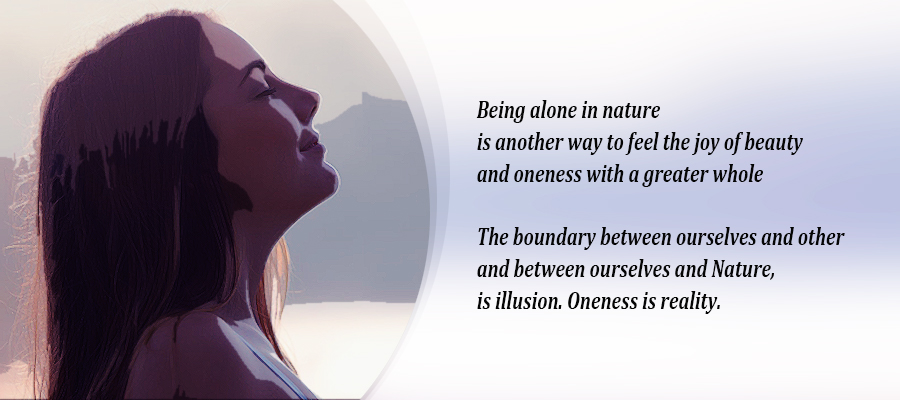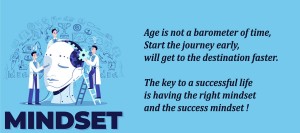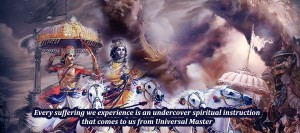In the book “Darsana of Oneness” has been much explained about what path and how to unity with the Universal (God Almighty). Various ways and prayers are offered daily to the Creator of this universe. But how do we understand Him? To whom do we pray? The great professors of ancient times who put forward the system of devotion to God think of a principle that can be adopted in the concept of God, while we pray, do worship, or even do daily meditation.
There are 5 aspects of this concept of God known as para, vyuha, vibhava, archa and antaryami. The parlance suggests God’s transcendence, something like the Semitic concept of the extra-cosmic existence of the Creator of the universe.
God is truly transcendent in one sense because this world of perception and experience is sensory conditioned, as we have observed; everything we call the world of experience is bound by reason. To the extent that the principle of God is not limited to all forms of sensory perception, someone says that God is far above. Such a perception, carrying distance from God that is not limited to the expansion of space or time, so that there are several points in religious people who hold to the concept of total transcendence and cannot be bridged. distance, as if to be a barrier between the world and God.
This can be clarified by four aspects of the concept of God explained in the Para principle. The second aspect calculated by worshipers is vyuha, a characterization of the manifestation of God to some degree. Vaishnava, in particular, identified the principle of degrees in the manifestation of God with the concepts of Vasudeva, Sankarshana, Pradyumna, and Aniruddha.
The concepts of Vasudeva, Sankarshana, Pradyumna, and Aniruddha are in accordance with more philosophical and mystical concepts of God such as Brahman, Ishvara, Hiranyagarbha, and Virat. But in a more cosmic aspect of the same level of manifestation, Brahman, the Absolute; Ishvara, the condition for potential creative causes; Hiranyagarbha, the subtle manifestation of the universe; and Virat, the real form that creation has taken.
Thus, we can have devotion to God as a transcendent, totally unreachable, extra-cosmic, super-spatial and super temporal God. We are free to do that if that is our choice. But we can also imagine God as a manifestation and get closer to us in a very prominent way. If this is also difficult, there are other suggestions. Vibhava is the glory of God manifested in His Incarnation.
God’s incarnation does not have to be human. The Ten Avatara is formed specifically conceptualized, but God is Ananta, without limits, is a variety of ways God can manifest Himself. Sudden events that occur unexpectedly in the world to overcome human grief can be considered as the Incarnation of God. Even natural disasters are certain acts of God’s will, and the massive destruction that occurs due to epidemics or tornadoes is also an act of God for certain purposes in creation.
The Lord’s incarnation, or the way a person understands the coming of the Lord does not have to always be as described in the scriptures as the famous ten or twenty-four Avatara. one can have the concept of God himself. One might expect God to come a certain way. However, whatever method, whatever form belongs to God.
Therefore, these are three aspects of the concept of God: para, vyuha, vibhava. God’s transcendence, of course, is impossible for us to imagine in the mind. The level mentioned is also not easy to understand. This aspect of the Incarnation is not that simple. Therefore, there is a fourth principle for worship that is archa – worship in the form of physical representation of an idol, portraits, diagrams, pictures, photographs, and sacred symbols. That can also be considered a form of God. If God is everywhere, He can also be in the smallest things, on every atom.
So, the daily worship that people sometimes do in their own small temples, in their homes is also an extraordinary form of devotion to God. The larger yajna in public worship temples is a more complicated illustration of the Archa of Avatara of God. Archa Avatara is the manifestation of God, His Incarnation, in the smallest form that can be an intermediary in the mind. This might be a shiva lingam or diagram; maybe a pendant hanging on the neck; maybe even a talisman. Maybe anything that is considered very valuable. All of this is able to gradually increase God’s awareness from lower concepts to bigger concepts.
The fifth principle is antaryami, which is the character of God who dwells within. God does not have to and is always para, or transcendent. To some extent, God’s transcendent character can be contradictory, as if, God’s immanence. Great distances contradict the direct presence of immanence. How could God have a contradictory character? He is the most distant, the most distant, and at the same time, very close. How is this possible?
God’s infinite limitations make Him appear very far from worshipers. A finite individual cannot imagine the infinite as something very broad and far. Therefore, his people consider God in a Transcendent Being only because of the greatness of infinity, but this same character is ‘infinity’, also making Him very close. From one point of view, infinitude means distance. From another point of view, the same infinity means the inclusiveness of beings. How can we be beyond infinity? And because of that, what can be closer to us than infinity? Can we imagine the beautiful implications of the idea of the infinite: the largest and also the smallest, the farthest and also the closest?
God can be understood as the Supreme Father and Mother because of His creation throughout the cosmos. He is the ancestor of all things, He is the father and mother of all things. His intense concern for each of us, He is the mother of all people. He is a great-grandfather, we can say, even beyond the creator, Brahma.
God is not just a father who has character at a distance that is quite respectable from other family members. Fathers in families are respected people and, therefore, are perceived far away. People don’t approach them too often or in very intimate ways. The father is more generally approached when there is a need. We mostly go to mom for little things. Father may not be the right conception of God because He is also a mother, who is able to do the closest and most intimate approach.
But human emotions vary. Humans are not satisfied with just having a father and mother. People want many other things in the world. Emotions are very widespread in the world of people and their relationships, so we don’t know what will actually satisfy. We also want to have friends and friends near us. It is not possible to always sit with our mother and father, even though they are very important. The mother is not equal; he was superior, and maybe his father was even superior, but someone’s emotions wanted to have equality. We want to be more intimate in ourselves.
Is God also a friend? Yes
The Krishna-Arjuna relationship is before us as the most intimate friendship between God and humans. Don’t your friends really care about your welfare? He will see that the friend is not in trouble anytime, and is always ready to help.
Sometimes we also feel small when we imagine the majesty of God. Are we equal to whatever nature He has? Are we dirty before Him? Such a vision diminishes a person’s personality.
But proximity is not enough. We must absorb the object into ourselves; then only we are truly satisfied. We have to look at our lunch, and then we are satisfied that lunch is here, put on the table. If the distance is very far, we will approach it, sit in a chair and look at it. Even then there was no satisfaction; it must be ourselves. The object of our love must be us until the difference between lovers is completely gone. The ideal becomes the real; the farthest being the closest. Even the ‘closest’ must be yourself.
This is the concept of Vaishnava pati-patni samyoga, or lovers relationship. This is considered to be the culmination of devotion, and also at the same time, the most intimate form of devotion to God for every human being to understand because the difficulty in entertaining this attitude towards God is that we are not used to any kind. the experience of unity in this world.
Only a pure soul can have such devotion; otherwise, we are only suitable for the other four because the concept of total unity is unknown to us. They are all outside. We may love them very much, but they are still outside. To erase this concept of externality, which is a prerequisite for Madhuryarasa, it is necessary to rise above human nature. Love, which is generally in fellow human beings, is not divine love. Because of our individuality, physicality, alienation, and social nature, we actually cannot have the accessibility of divine love in our own personalities. We can only talk about it, hear it in the scriptures, from the gopis, but how many of us can be like the gopis? In pure love, when two things become one, the awareness of personality disappears.
Even when we love something and feel happy about the object of desire, happiness does not arise either from us or from outside objects. This is the temporary removal of the distance between ourselves and the object that arises in the mind, for a split second, because of the feeling that the desired object has been possessed. As long as the object is far away and not possessed, the mind hovers around the object. Getting restless; become active. When the mind is active, for a while, away from the true consciousness, Atman. Even if there is a distance between Atman and the mind, we are not happy. This distance continues as long as the object is outside. When the mind feels that it has gotten what it wants, it returns to Self. In return, this goes beyond his individuality,
The experience of love and satisfaction in any form, even good eating satisfaction, does not arise only from food or substance or physical condition. There is a third element. If not, we can put delicious food in a dead body. Will he enjoy the food? The stomach is there and the food is there, but will not feel the presence of food at all.
The third thing is awareness. It must go beyond the notion of the body. If we always think about our body when we eat food, we will not enjoy that food. We also won’t enjoy it if we keep thinking about that object. At that time we don’t think about food or about ourselves. The third element, which is not recognized, occurs. That is God who manifests Himself. Even the slight pleasure of a cup of tea is that God manifests Himself. Madurya, the supreme bhava, is not meant for ordinary people. The eternal longing for God is very important. ‘The eternal longing for God’ needs to be underlined; it is not only a mortal desire for God.
These are some of the ways we can put the concept of God, the Godhead ideals, before us in the contemplation of this article.
The worship rituals that we sometimes see performed in large temples are also a particular method of praying to God. Many modern intellectuals do not perform rituals, because the most important thing is that each of our actions is ritual. All movements that we do in everyday life. As a simple example; … Sir, please sit down. allow me to serve you a cup of coffee … “- this action is actually a ritual.
Rituals are external actions from internal feelings.
In one of the ritualistic worship processes, there is something called Nyasa. Nyasa means ‘placement’. we place limbs in our own limbs, as pujari does. Often he did not even think about what he was doing, but this was an act of worship with which he placed every part of the deity in his own personality.
God who is worshiped must be worshiped in a way that satisfies personality, through the identity of objects with oneself. Merging is actually difficult, people do merging rituals: The head of God is my head; God’s eyes are my eyes; God’s nose is my nose; ears, fingers, hands, heart, lungs, body, everything, is mine. If we do this profound process and think it through, we will feel the vibration in our personality.
Our personality cannot be shaken if we truly identify ourselves with something that is not our Self. A kind of samadhi occurs. This samadhi is the union that we build between ourselves and worship, which is a symbol of God, by placing members of the body of God in our own members (or vice versa, members of our body in members of God’s body).
In the Saiva Siddhanta system, there are other methods of worshiping God gradually, known as charya, craft, yoga and jnana. Earlier, I mentioned 5 aspects of service from Vaishnava’s point of view. Now I mention Saiva’s point of view about worship, that is, outside services at the temple such as picking leaves, picking flowers, and serving God only around the temple – on the porch, on the outskirts, as indeed, but not really going inside. There are some people in the temple who don’t go inside. They always clean outside for example by sweeping, arranging things, and so on. That is called charya.
People who clean the shrine every day do crafts. He who turns on the lights and burns incense, he does the arati without realizing it helps him in actual worship. That is an approach closer to God than charya, which is pure outside. More internal is actual worship itself – that is, people who worship God become identified in yoga. Charya and craft are the first two aspects; the third is yoga. Yoga is the union of the self with worship or object worship with the process of Nyasa. In certain temples, worshipers are happy and sincere. People enjoy happily what they do. Making offerings Dances and music are also ways in which God is worshiped in several temples and temples.
The last is jnana, which is the calm and still reflection of this identity which he has attained. In worship or worship, give a few minutes to sit quietly before the prayer begins.
Each person can choose one of the methods that is suitable and in accordance with the personality, but the realization of God is a must, and we must choose one or the other of these ways of worship to God, a meditation on God, our daily practice is a unity with God.





